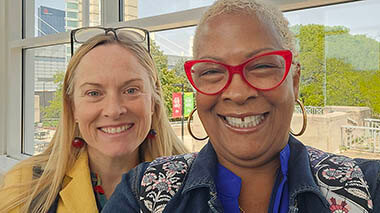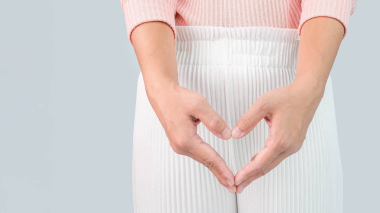It’s not something women usually discuss with each other, but it’s more common than you’d think. One in 10 women in the United States suffers from endometriosis.
The chronic and often painful disease usually occurs in women ages 25 to 40, although it can also occur in teenagers. Even though endometriosis is very common, there is still a lack of awareness surrounding the disease and its symptoms.
“It’s this lack of awareness that can lead to delayed diagnosis,” said Elizabeth S. Morgan, MD, of Women’s Center for Pelvic Health, part of Atrium Health.
 Elizabeth Morgan, MD, is a pelvic pain specialist with the Women’s Center for Pelvic Health at Atrium Health. She has extensive experience in the evaluation and treatment of chronic pelvic pain. Using the biopsychosocial model for women suffering from pelvic pain, Dr. Morgan helps patients better understand their mind, body and interpersonal relationships, and how these factors impact their health.
Elizabeth Morgan, MD, is a pelvic pain specialist with the Women’s Center for Pelvic Health at Atrium Health. She has extensive experience in the evaluation and treatment of chronic pelvic pain. Using the biopsychosocial model for women suffering from pelvic pain, Dr. Morgan helps patients better understand their mind, body and interpersonal relationships, and how these factors impact their health.
Why Is It So Difficult to Diagnose?
Dr. Morgan explains:
- Too often, symptoms, such as cramps and heavy periods, are mistaken for typical menstrual symptoms
- Each woman’s experience is unique – the range of symptoms and levels of pain can vary from woman to woman
- The severity of symptoms does not always indicate the extent of the disease – some women lack any noticeable symptoms despite having advanced conditions
What Are the Top 5 Signs and Symptoms?
1) Pelvic Pain
- This is the most common symptom, and may include severe cramping in your lower back or tummy
- This discomfort may begin before your period and last several days after your period has started
2) Painful Sex
- Sharp deep pelvic pain during and/or after intercourse
3) Painful Bowel Movements
- Diarrhea and constipation may also occur, especially around your period
4) Excessive or Irregular Bleeding
- Exceptionally heavy periods
- Consistent bleeding between periods
5) Infertility
- 30 to 40 percent of women with endometriosis are struggling with infertility
- Scarring and adhesions in the pelvis can cause difficulty getting pregnant
 Elizabeth Morgan, MD, is a pelvic pain specialist with the Women’s Center for Pelvic Health at Atrium Health. She has extensive experience in the evaluation and treatment of chronic pelvic pain. Using the biopsychosocial model for women suffering from pelvic pain, Dr. Morgan helps patients better understand their mind, body and interpersonal relationships, and how these factors impact their health.
Elizabeth Morgan, MD, is a pelvic pain specialist with the Women’s Center for Pelvic Health at Atrium Health. She has extensive experience in the evaluation and treatment of chronic pelvic pain. Using the biopsychosocial model for women suffering from pelvic pain, Dr. Morgan helps patients better understand their mind, body and interpersonal relationships, and how these factors impact their health.



